Global Navigation Satellite System Spoofing Detection in Inertial Satellite Navigation Systems
Abstract
:1. Introduction
2. Materials and Methods
- Developing a mathematical apparatus for the implementation of the spoofing detection algorithm;
- Developing a methodology for experimental studies of the developed algorithm’s capabilities;
- Conducting simulation in accordance with the developed methodology of experimental research;
- Analyzing the results of experimental studies with an assessment of the operability of the proposed technical solutions and the primary characteristics of the developed algorithm.
2.1. Model of Carrier Phase Measurements in Multi-Antenna GNSS Receiving Equipment
2.2. Algorithm for Detecting GNSS Spoofing in Inertial Satellite Navigation Systems
3. Results
3.1. Simulation Results
- Trajectory of the moving object (linear motion of the center of mass and angular motion around the center of mass);
- Calculation of navigation satellites’ coordinates by ephemeris;
- Generation of GNSS code and phase measurements in the presence and absence of spoofing;
- Calculations of coordinates based on GNSS code measurements;
- Formation of measurements of SINS gyroscopes and accelerometers;
- Calculation of navigation parameters using the SINS algorithm;
- GNSS spoofing algorithm implementation in inertial satellite navigation systems.
- (1)
- Noise of phase measurements;
- (2)
- Distance between antennas;
- (3)
- The accuracy of SINS.
3.2. HIL Simulation Results
4. Discussion
5. Conclusions
Author Contributions
Funding
Data Availability Statement
Conflicts of Interest
References
- Schmidt, G.T. GPS based navigation systems in difficult environments. Gyroscopy Navig. 2019, 10, 41–53. [Google Scholar] [CrossRef]
- Zhuravlev, A.V.; Besmaga, V.M.; Markin, V.G. The effectiveness of jamming the navigation equipment of consumers global navigation satellite systems. Radioengineering 2017, 6, 196–202. [Google Scholar]
- Alexander, K.; Lawrence, D. GNSS Intentional Interference and Spoofing. In Proceedings of the RTCA Special Committee 2015, Washington, DC, USA, 10 November 2015. [Google Scholar]
- Shang, S.; Li, H.; Wei, Y.; Lu, M. A flexible replay delay control method for GNSS direct meaconing signal. In Proceedings of the 2020 International Technical Meeting of The Institute of Navigation, San Diego, CA, USA, 21–24 January 2020; Volume 3, pp. 992–1000. [Google Scholar]
- Tippenhauer, N.O.; Pöpper, C.; Rasmussen, K.B.; Capkun, S. On the Requirements for Successful GPS Spoofing Attacks. In Proceedings of the Association for Computing Machinery, Chicago, IL, USA, 17–21 October 2011. [Google Scholar]
- Coulon, M.; Chabory, A.; Garcia-Pena, A.; Vezinet, J.; Macabiau, C.; Estival, P.; Ladoux, P.; Roturier, B. Characterization of Meaconing and its Impact on GNSS Receivers. In Proceedings of the 33rd International Technical Meeting of the Satellite Division of The Institute of Navigation (ION GNSS+ 2020), Virtual, 22–25 September 2020; pp. 3713–3737. [Google Scholar] [CrossRef]
- Wang, W.; Wang, J. GNSS induced spoofing simulation based on path planning. IET Radar Sonar Navig. 2022, 16, 103–112. [Google Scholar] [CrossRef]
- Dao, H.K.; Stupin, D.D.; Shevchenko, R.A. Principles of detection of intentional jamming affecting the equipment of consumers of satellite radio navigation systems. J. Radio Electron. 2019, 5, 14. [Google Scholar]
- Gunther, C. A survey of spoofing and counter-measures. NAVIGATION J. Inst. Navig. 2014, 61, 159–177. [Google Scholar] [CrossRef]
- Jafarnia-Jahromi, A.; Broumandan, A.; Nielsen, A.; Lachapelle, G. GPS vulnerability to spoofing threats and a review of antispoofing techniques. Int. J. Navig. Obs. 2012, 2, 127072. [Google Scholar] [CrossRef]
- Karutin, S.N.; Kharisov, V.N.; Pavlov, V.S. Synthesis of interference resistant spatiotemporal filter for navigation parameters high precision measurements using global navigation satellite systems. Meas. Tech. 2020, 63, 476–486. [Google Scholar] [CrossRef]
- Psiaki, M.L.; O’Hanlon, B.W.; Powell, S.P.; Bhatti, J.A.; Wesson, K.D.; Schofield, T.E. GNSS spoofing detection using two-antenna differential carrier phase. In Proceedings of the 27th International Technical Meeting of The Satellite Division of the Institute of Navigation (ION GNSS+), Tampa, FL, USA, 8–12 September 2014; Volume 3, pp. 2776–2800. [Google Scholar]
- Yakushenko, S.; Malyshev, A. A nonparametric method of estimating the noise immunity of satellite radio-navigation receivers in the conditions of the relay noises. Issues Radio Electron. 2016, 6, 88–92. [Google Scholar]
- Rothmaier, F.; Chen, Y.; Lo, S.; Walter, T. GNSS spoofing detection through spatial processing. NAVIGATION J. Inst. Navig. 2021, 68, 243–258. [Google Scholar] [CrossRef]
- Shang, S.; Li, H.; Wei, Y.; Lu, M. GNSS Spoofing Detection and Identification Based on Clock Drift Monitoring Using Only One Signal. In Proceedings of the 2020 International Technical Meeting of The Institute of Navigation, San Diego, CA, USA, 21–25 January 2020; pp. 331–340. [Google Scholar] [CrossRef]
- Truong, V.; Vervisch-Picois, A.; Rubio Hernan, J.; Samama, N. Characterization of the Ability of Low-Cost GNSS Receiver to Detect Spoofing Using Clock Bias. Sensors 2023, 23, 2735. [Google Scholar] [CrossRef] [PubMed]
- Wang, J.; Tang, X.; Ma, P.; Wu, J.; Ma, C.; Sun, G. GNSS Spoofing Detection Using Q Channel Energy. Remote Sens. 2023, 15, 5337. [Google Scholar] [CrossRef]
- Broumandan, A.; Lachapelle, G. Spoofing Detection Using GNSS/INS/Odometer Coupling for Vehicular Navigation. Sensors 2018, 18, 1305. [Google Scholar] [CrossRef] [PubMed]
- Borio, D.; Gioia, C. A dual-antenna spoofing detection system using GNSS commercial receivers. In Proceedings of the 28th International Technical Meeting of The Satellite Division of the Institute of Navigation (ION GNSS+ 2015), Tampa, FL, USA, 14–18 September 2015; Volume 1, pp. 325–330. [Google Scholar]
- Kerns, A.J.; Shepard, D.P.; Bhatti, J.A.; Humphreys, T.E. Unmanned aircraft capture and control via GPS spoofing. J. Field Robot. 2014, 31, 617–636. [Google Scholar] [CrossRef]
- Montgomery, P.Y.; Humphreys, T.E.; Ledvina, B.M. Receiver-autonomous spoofing detection: Experimental results of a multi-antenna receiver defense against a portable civil GPS spoofer. In Proceedings of the International Technical Meeting of The Institute of Navigation, Anaheim, CA, USA, 26–28 January 2009; Volume 6, pp. 124–130. [Google Scholar]
- Stenberg, N.; Axell, E.; Rantakokko, J.; Hendeby, G. Results on GNSS Spoofing Mitigation Using Multiple Receivers. NAVIGATION J. Inst. Navig. 2022, 69, navi.510. [Google Scholar] [CrossRef]
- Blois, M.; Studenny, J.; O’Keefe, K.; Liu, B. Baseline Spoofing Detection for Aircraft with Standard Navigation Hardware. In Proceedings of the 36th International Technical Meeting of the Satellite Division of The Institute of Navigation (ION GNSS+ 2023), Denver, CO, USA, 11–15 September 2023; pp. 824–835. [Google Scholar] [CrossRef]
- Schleppe, J.B. Development of a Real-Time Attitude System Using a Quaternion Parameterization and Non-Dedicated GPS Receivers; Department of Geomatics Engineering, The University of Calgary: Alberta, Canada, 1996. [Google Scholar]
- Zharkov, M.V.; Veremeenko, K.K.; Antonov, D.A.; Kuznetsov, I.M. Attitude determination using ambiguous GNSS phase measurements and absolute angular rate measurements. Gyroscopy Navig. 2018, 9, 275–283. [Google Scholar] [CrossRef]
- Standartinform. Aircraft Dynamics in Atmosphere. Terms, Definitions and Symbols, GOST 20058-80, 1 July 1981. Available online: https://docs.cntd.ru/document/1200009362 (accessed on 30 September 2023).
- Zharkov, M.; Veremeenko, K.; Kuznetsov, I.; Pronkin, A. Experimental Results of Attitude Determination Functional Algorithms Implementation in Strapdown Inertial Navigation System. Sensors 2022, 22, 1849. [Google Scholar] [CrossRef] [PubMed]
- Silicon Sensing Systems Ltd. Inertial Sensor Modules & Systems. Available online: https://www.siliconsensing.com/products/inertial-modules-systems/ (accessed on 30 September 2023).
- Novatel Inc. OEMV-1G Technical Specifications. Available online: https://www.novatel.com/products/gnss-receivers/oem-receiver-boards/oemv-receivers/oemv-1g/ (accessed on 30 September 2023).
- Navis SN-3803M GNSS Signal Simulator. Available online: https://navis.ru/assets/images/catalog/lab/CH-3803M.pdf (accessed on 30 September 2023).
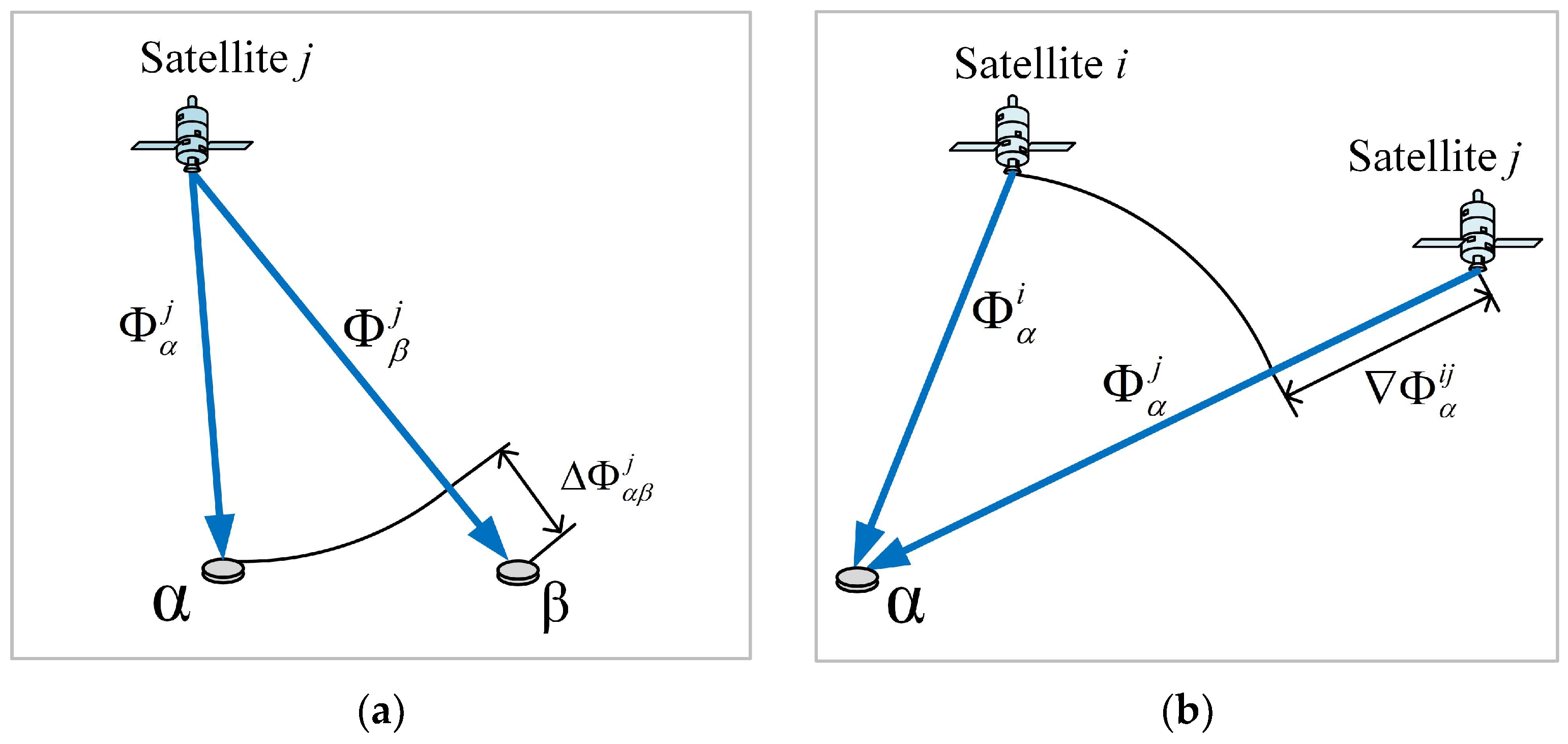
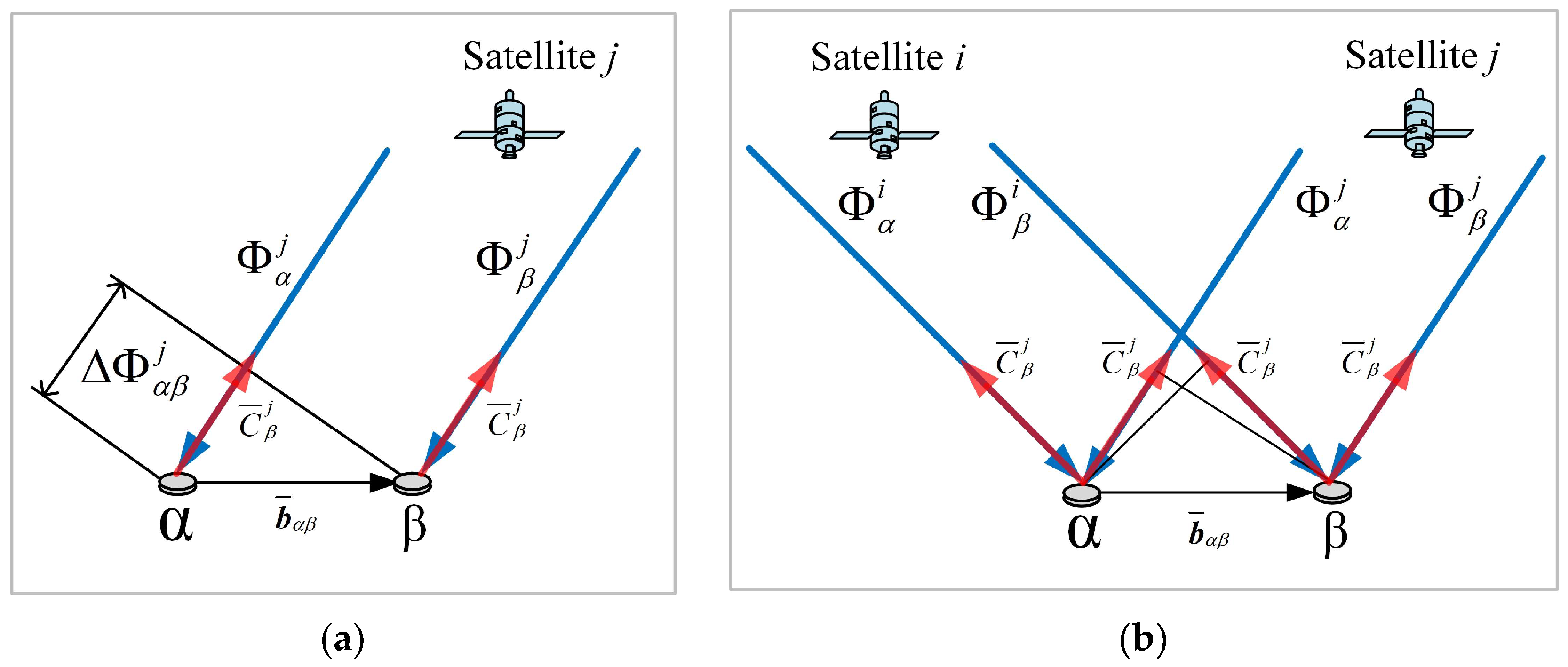

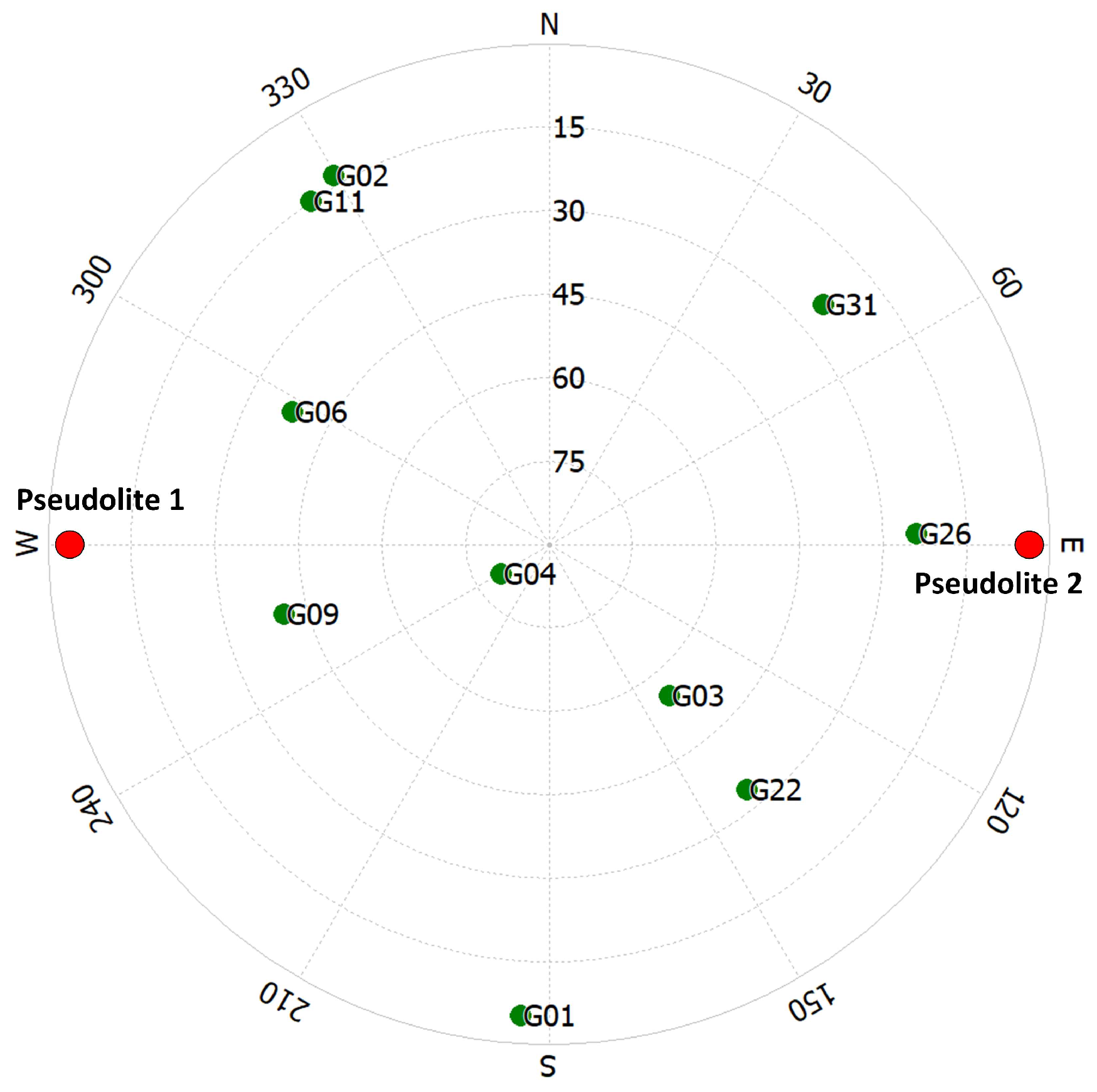

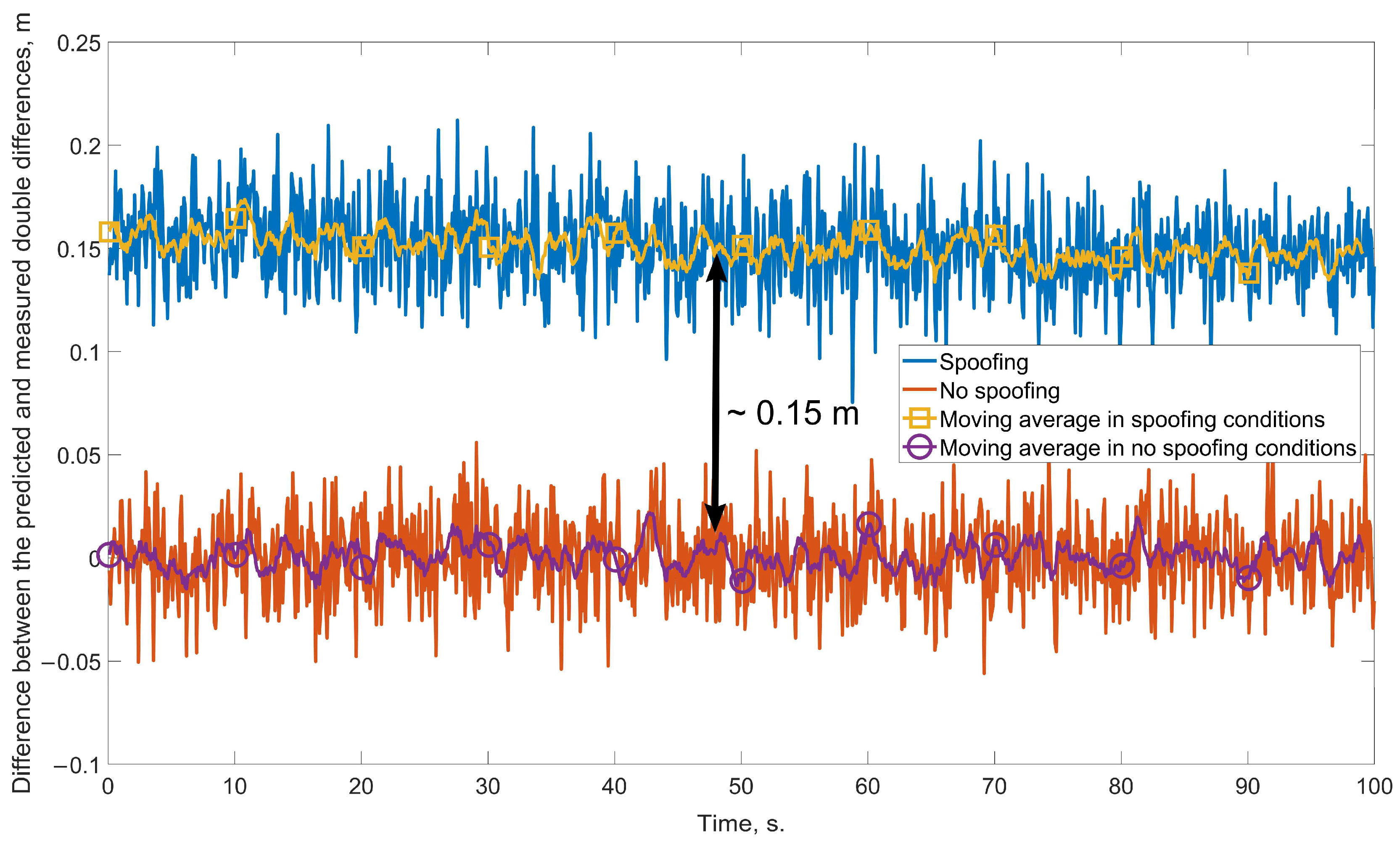
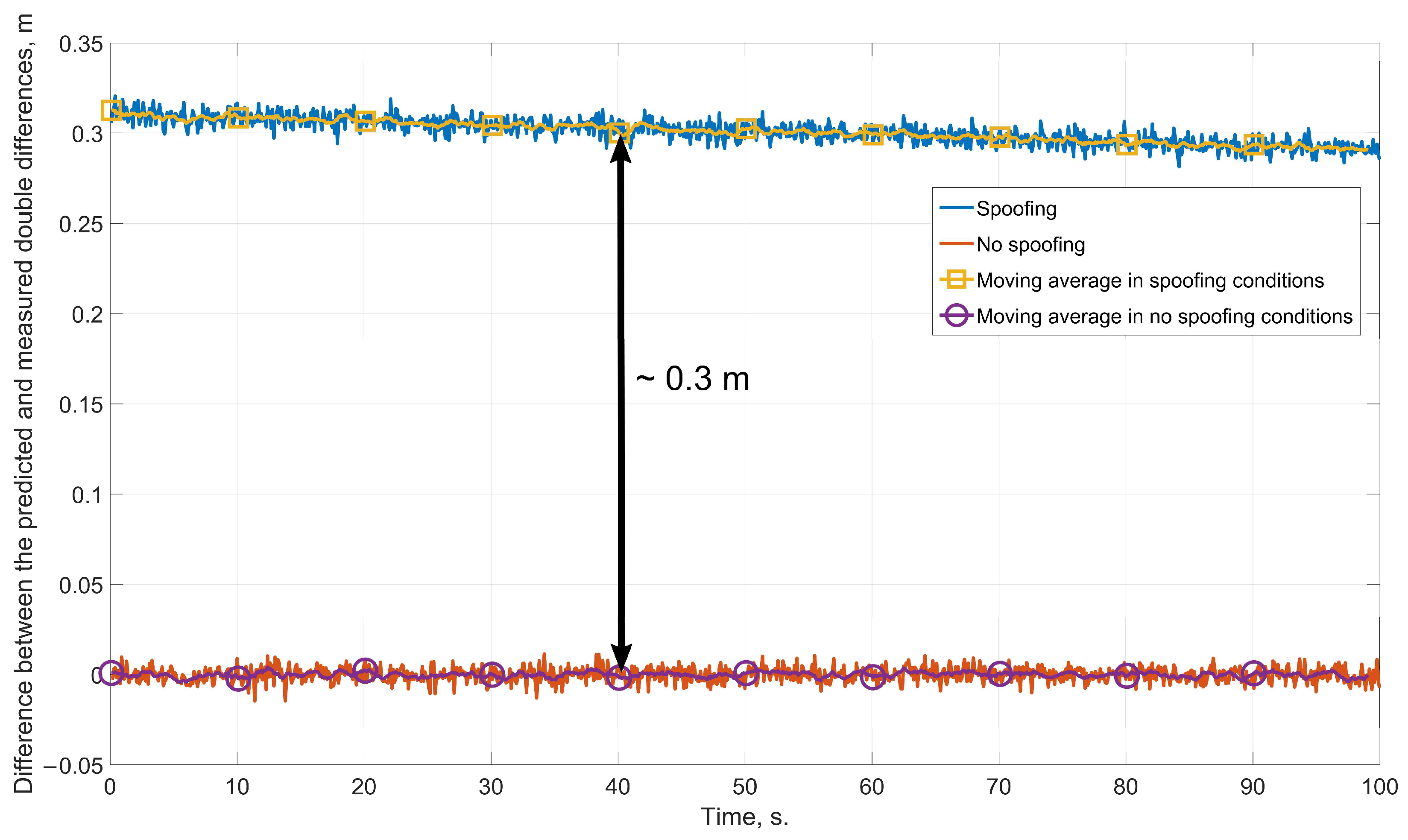
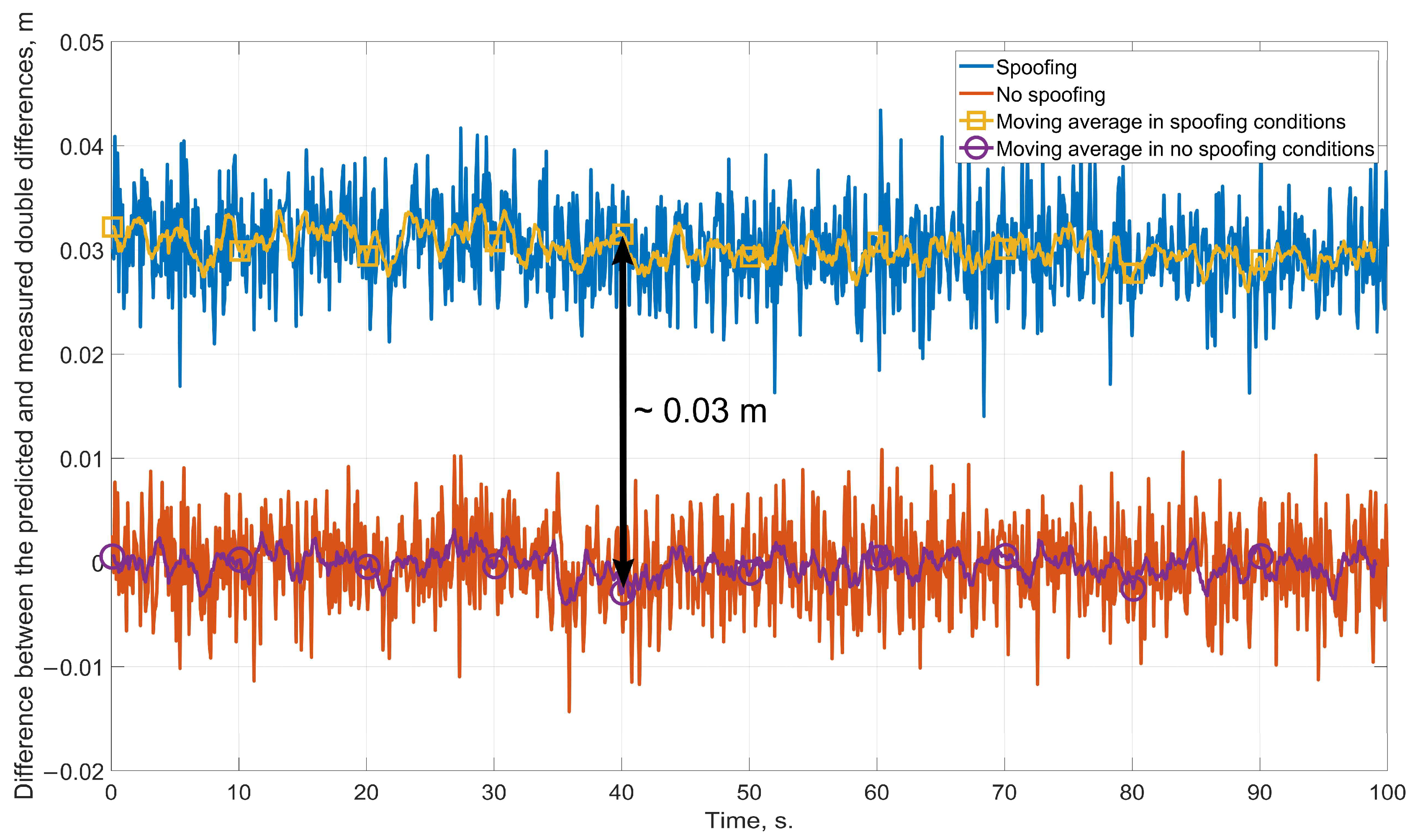
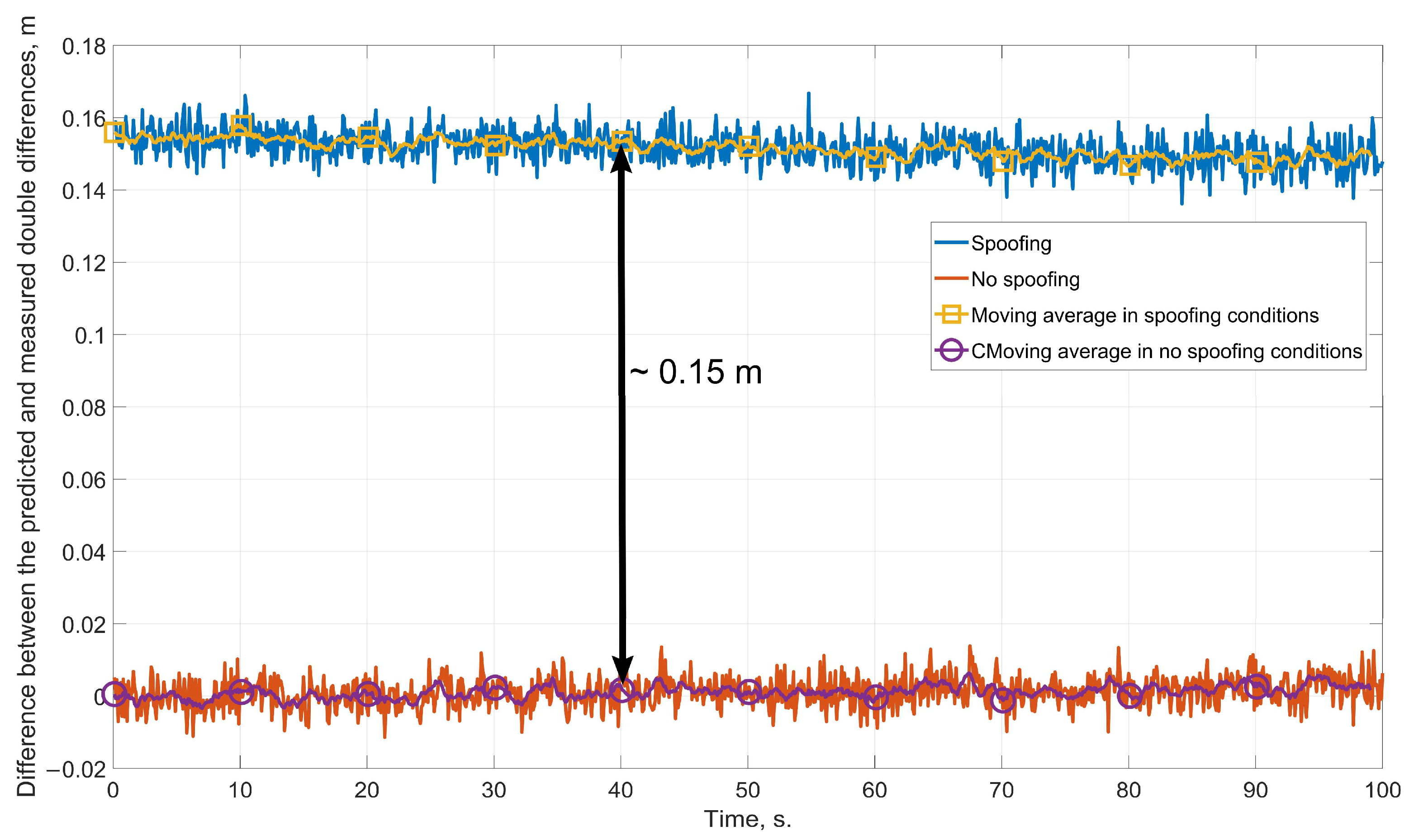
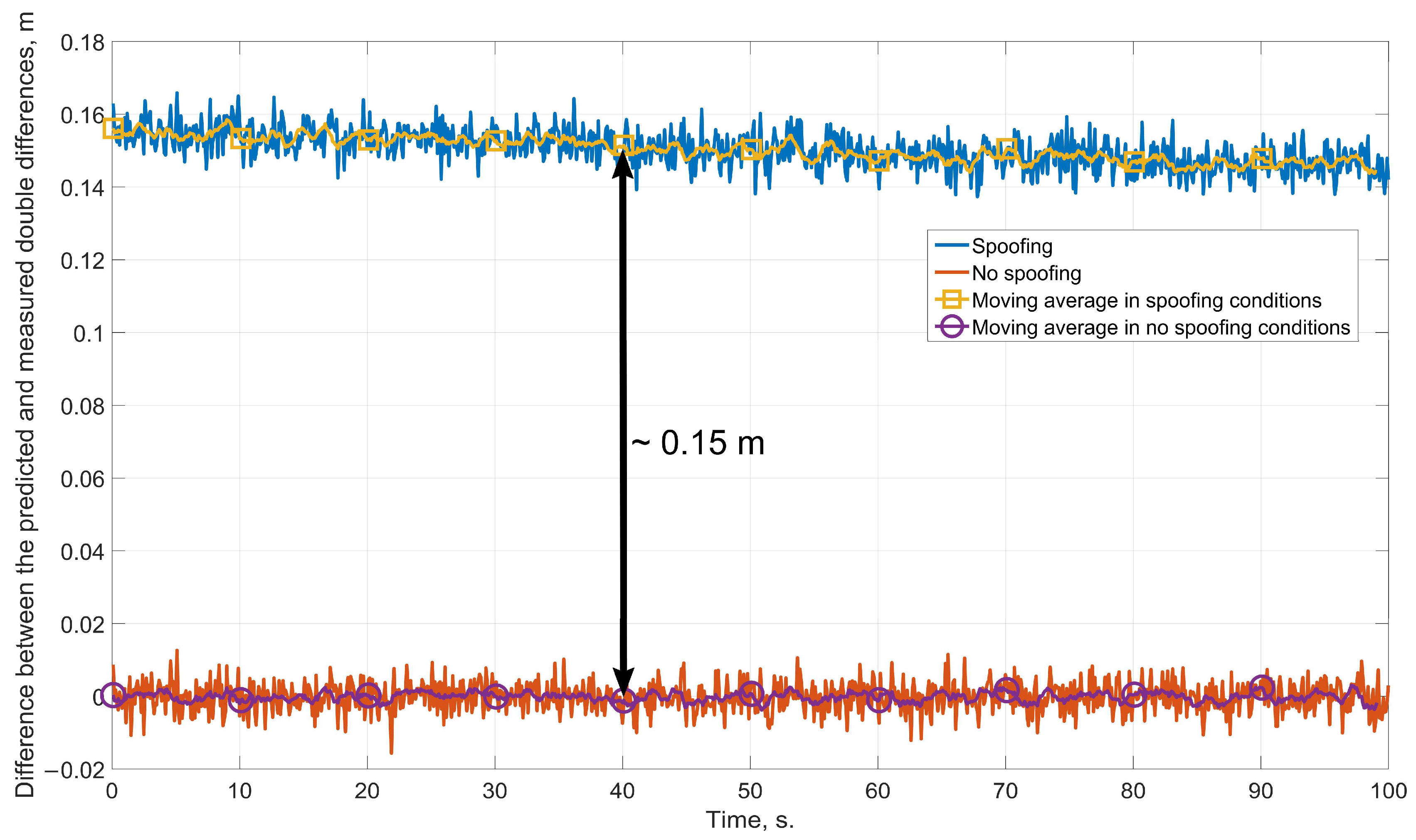
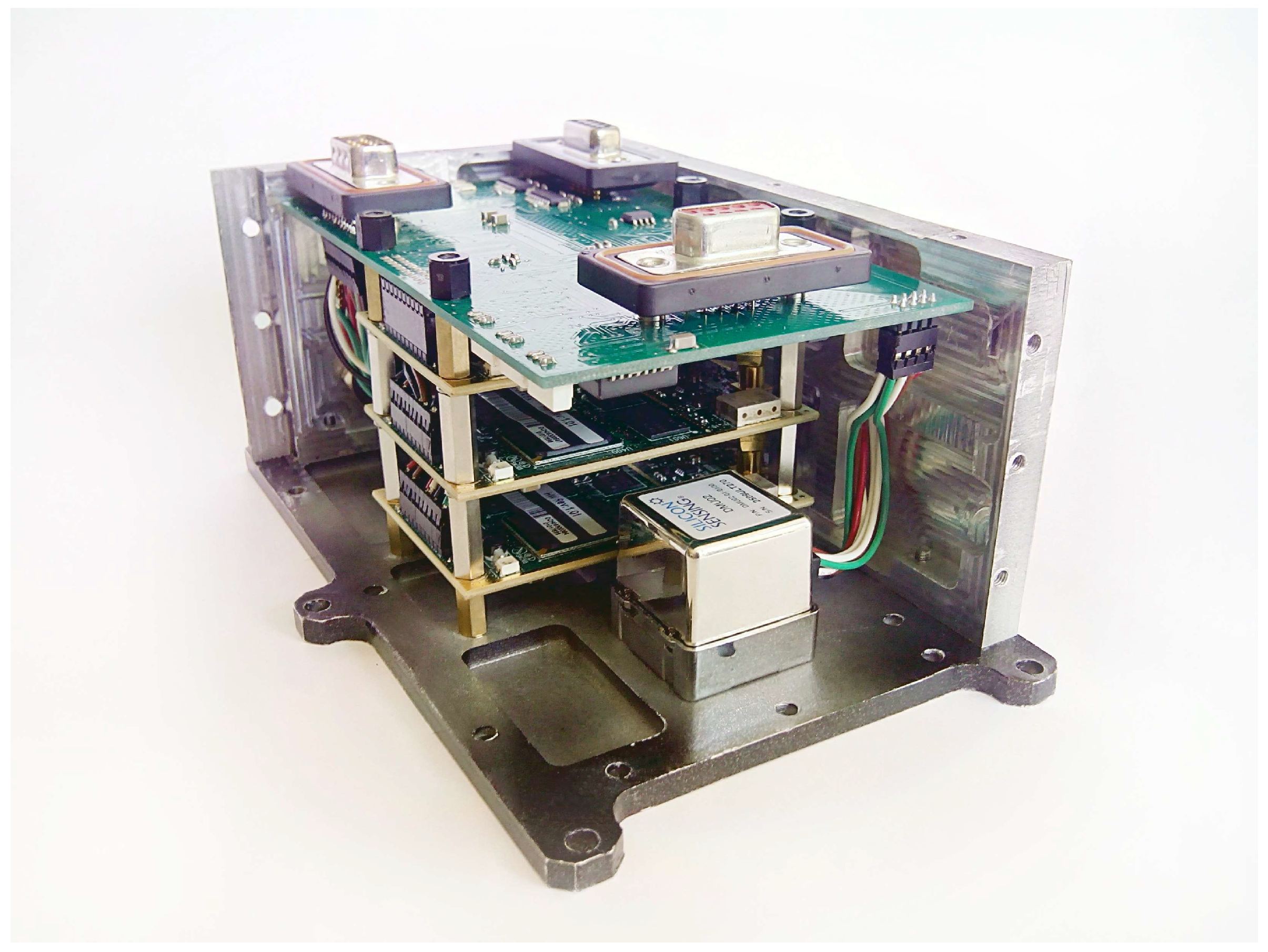
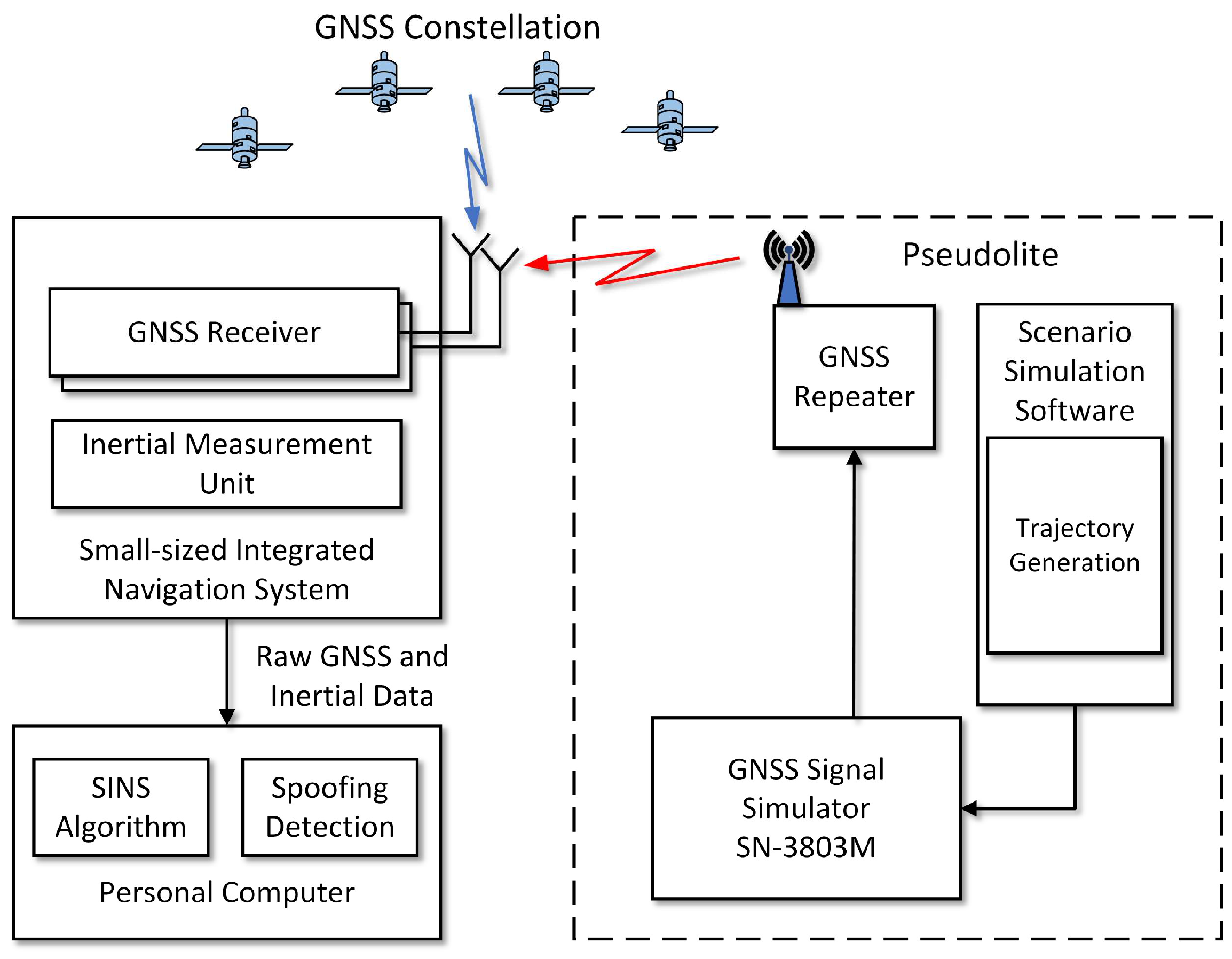

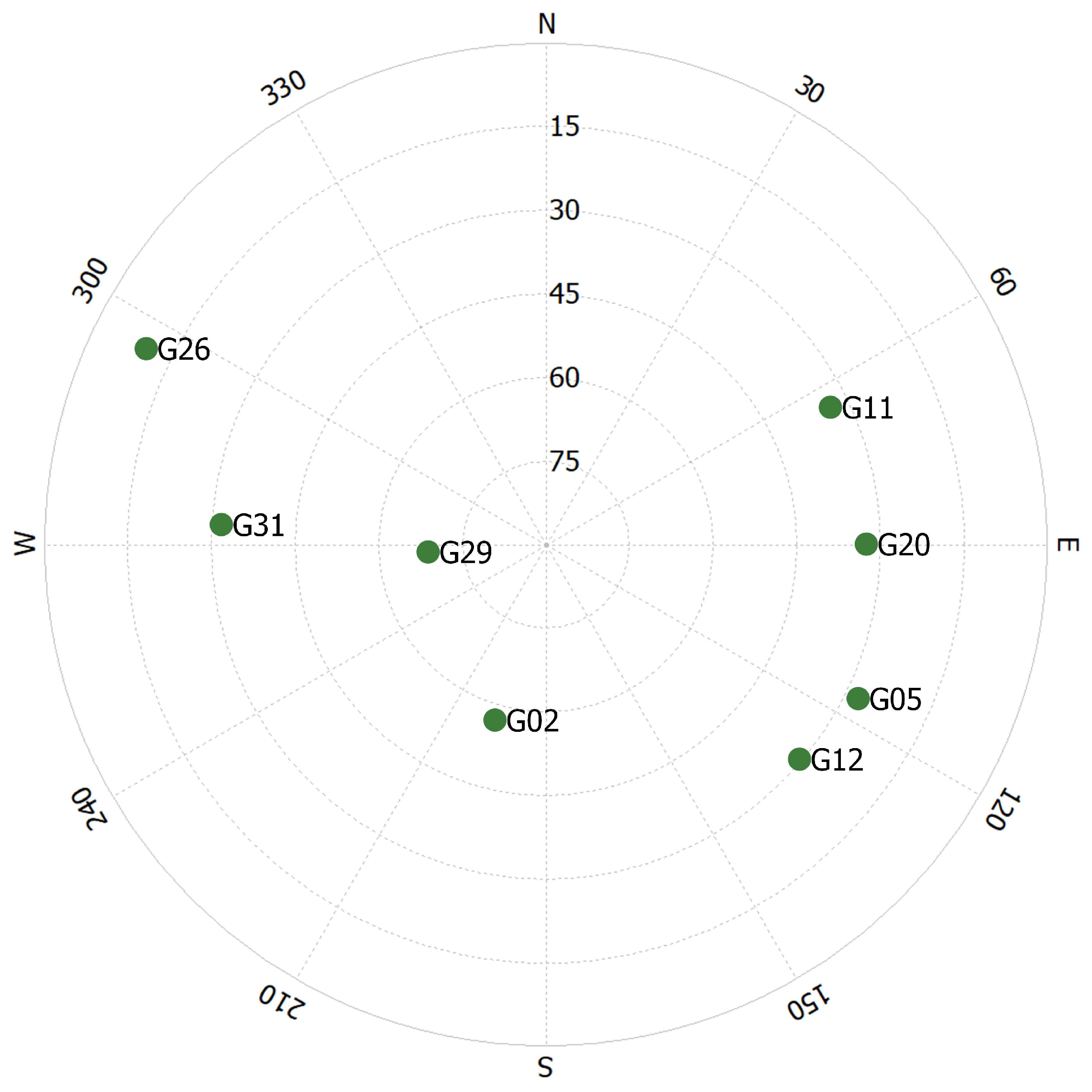
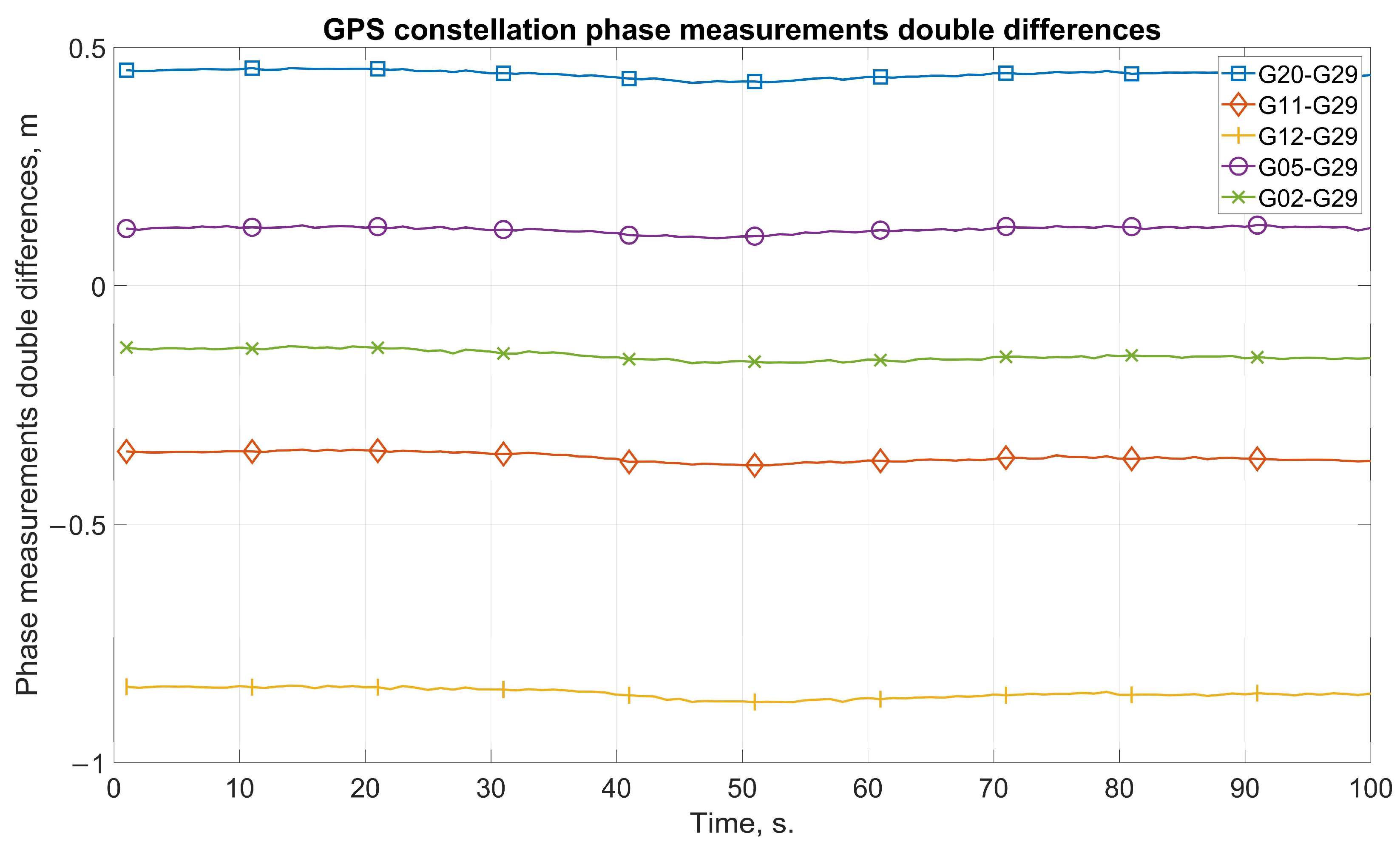
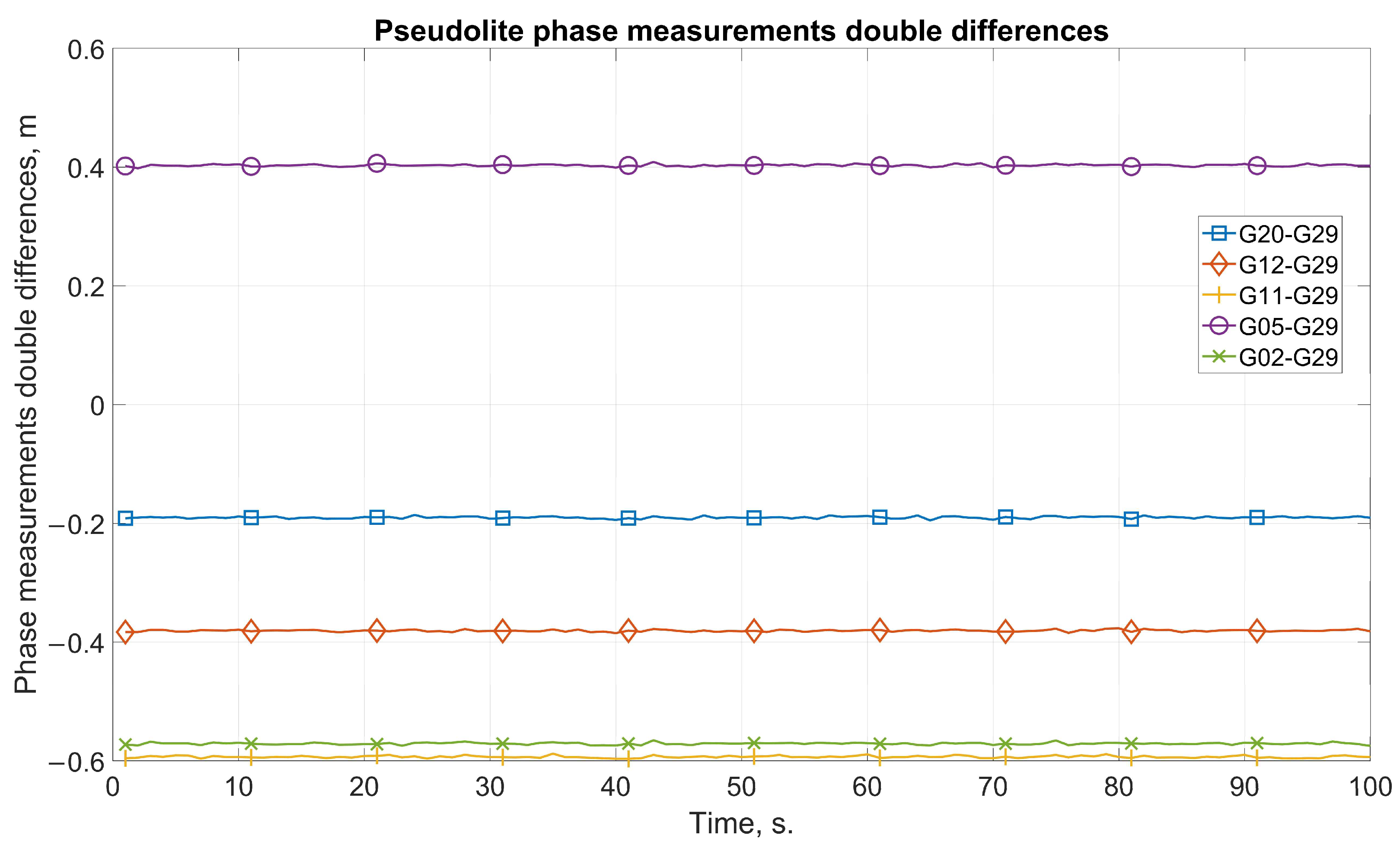
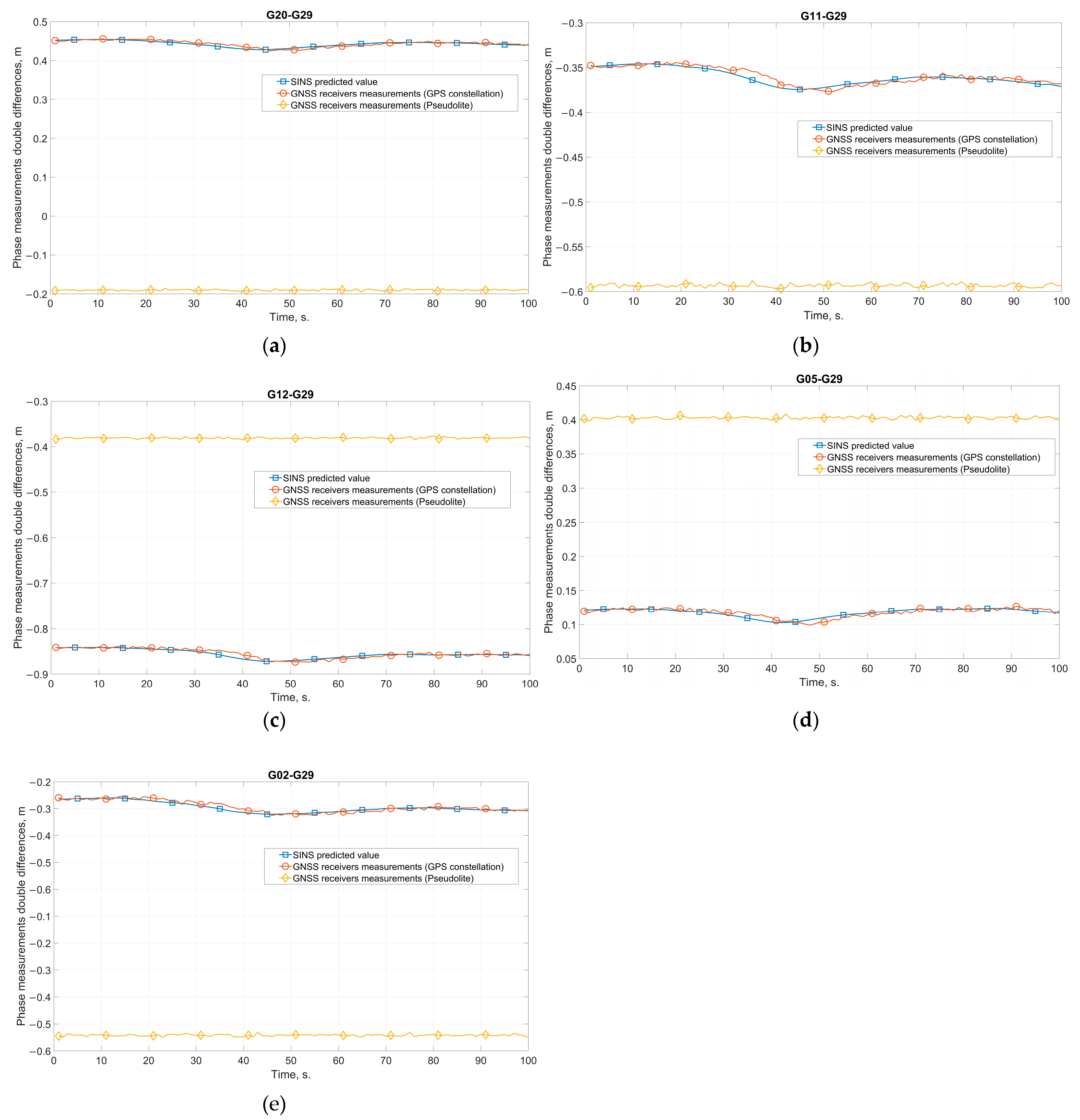
| Sats | Pseudolite DD 1, m | SINS Predicted DD, m | RESIDUAL, m | Time to Spoofing Detection, Epochs |
|---|---|---|---|---|
| G20-G29 | −0.19 | 0.45 | 0.64 | 4 |
| G12-G29 | −0.38 | −0.85 | 0.47 | 3 |
| G11-G29 | −0.59 | −0.36 | 0.23 | 3 |
| G05-G29 | 0.4 | 0.12 | 0.28 | 5 |
| G02-G29 | −0.57 | −0.15 | 0.42 | 3 |
Disclaimer/Publisher’s Note: The statements, opinions and data contained in all publications are solely those of the individual author(s) and contributor(s) and not of MDPI and/or the editor(s). MDPI and/or the editor(s) disclaim responsibility for any injury to people or property resulting from any ideas, methods, instructions or products referred to in the content. |
© 2023 by the authors. Licensee MDPI, Basel, Switzerland. This article is an open access article distributed under the terms and conditions of the Creative Commons Attribution (CC BY) license (https://creativecommons.org/licenses/by/4.0/).
Share and Cite
Zharkov, M.; Veremeenko, K.; Kuznetsov, I.; Pronkin, A. Global Navigation Satellite System Spoofing Detection in Inertial Satellite Navigation Systems. Inventions 2023, 8, 158. https://doi.org/10.3390/inventions8060158
Zharkov M, Veremeenko K, Kuznetsov I, Pronkin A. Global Navigation Satellite System Spoofing Detection in Inertial Satellite Navigation Systems. Inventions. 2023; 8(6):158. https://doi.org/10.3390/inventions8060158
Chicago/Turabian StyleZharkov, Maksim, Konstantin Veremeenko, Ivan Kuznetsov, and Andrei Pronkin. 2023. "Global Navigation Satellite System Spoofing Detection in Inertial Satellite Navigation Systems" Inventions 8, no. 6: 158. https://doi.org/10.3390/inventions8060158






